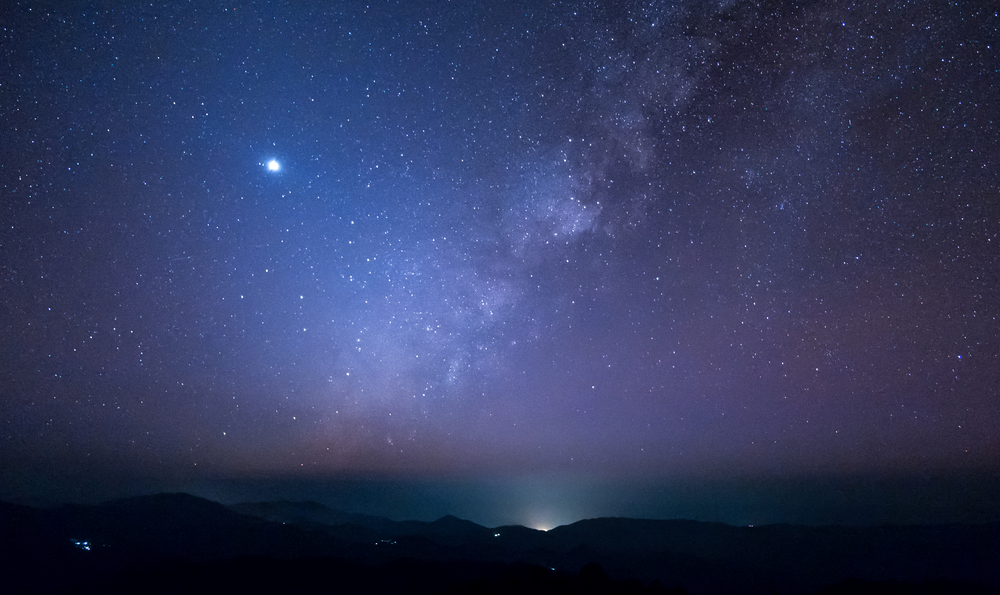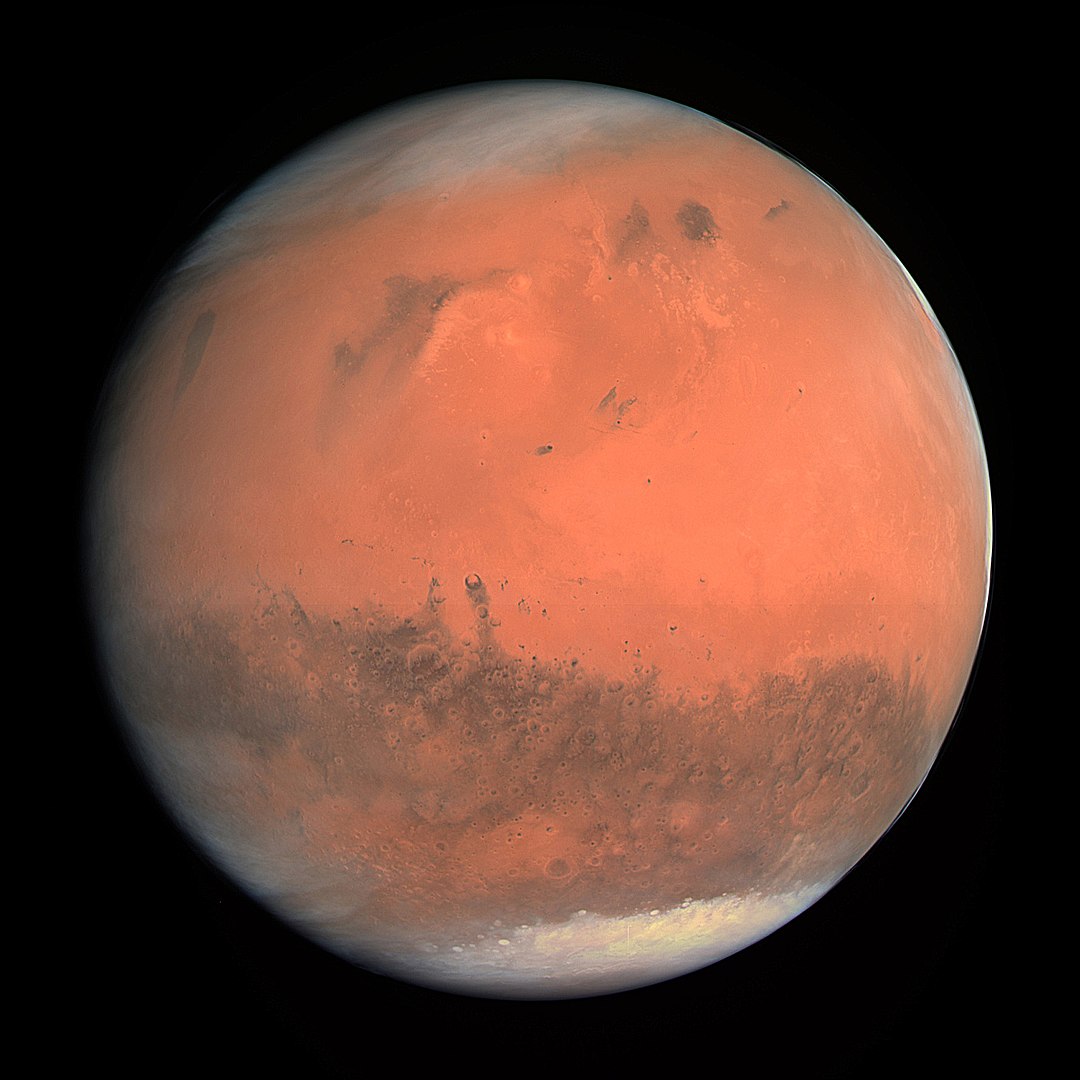What is zodiacal light?
Zodiacal light is a relatively rare natural phenomenon of stunning
Previously, people thought that the zodiacal light somehow originated from phenomena in the upper atmosphere of the Earth. However, it is not.
The solar system, which formed more than 4.5 billion years ago, was then a cloud of gas and dust orbiting a new star.Planets and asteroids then formed from this cloud, but some of the dust on the periphery remained.Just as many faint stars create the amorphous glow known as the Milky Way, a clump of particles from an interplanetary dust cloud causesa faint glow, dubbed the "zodiac" glow, writes National Geographic.

Recently, however, scientists have suggested that Mars is the source of the zodiacal light.
Astronomers have long believed that dust is carried into the inner solar system by several asteroids and comets approaching from afar.
But now the Juno mission team claims that the culprit may beThey published their discovery in a March 9 paper inJournal of Geophysical Research: Planets... Instrument aboard the Juno spacecraftfortunately discovered dust particles that crashed into the spacecraft during its journey from Earth to Jupiter. The impacts suggested the origin and orbital evolution of the dust.
While their discovery is significant, scientists who have been studying cosmic dust for years made it by accident.
There is now strong evidence that Mars,The dustiest planet we know of is the source of the zodiacal light, scientists cannot yet explain how dust could have escaped from the grip of Martian gravity. They hope other astronomers will help them.
Meanwhile, the researchers note thatdetermining the true distribution and density of dust particles in the solar system will help engineers develop materials for spacecraft that can better resist dust impacts. Knowing the exact distribution of dust can also help design the flight paths of future spacecraft to avoid maximum particle concentration. Tiny particles traveling at such high speeds can damage a spacecraft 1,000 times their mass.
These dust particles in space propagate from the Sun in the same flat disk of space, populated by Mercury, Venus, Earth, Mars, and other planets.This plane of our solar system is called the ecliptic. The ecliptic is the apparent motion of the Sun, or, in scientific terms, the ellipsoid ring along which the planets of the Solar System move around the Sun. Most objects in the solar system, including the Kuiper Belt, planets and their moons, small asteroids, and cosmic dust lieAt certain times of the year, the setting or rising Sun illuminatesThese astronomical objects, as a result of which we can observe such an interesting phenomenon as zodiacal light.
In other words, zodiacal light is a phenomenon of the solar system.millimeters to microns, densest in the vicinity of the Sun and extending beyond the orbit of Mars.The sun's rays illuminate these specks of dust, creating the light we see.
What does the zodiac light look like?
The light looks like a hazy pyramid. It appears in the sky shortly before a real dawn illuminates the sky. It is comparable in brightness to the Milky Way.
Maybe you've already seen the zodiacal light in the sky and didn't realize it.Maybe you've noticed it before while driving on a highway or country road.It's best seen in spring and fall, no matter where you live on Earth.
Why is this light called "zodiacal"?
This astronomical phenomenon got its name as a result of the fact that it appears on the line along which people passall 12 constellations of the zodiac.This line is the ecliptic.Unfortunately, the zodiacal glow is not visible in all corners of the world and not in all seasons.
How to observe an astronomical event?
No matter where you are on Earth, your best chance of seeing it in the east before dawn is late summer or early autumn (false dawn ).
And yet , for both hemispheres, spring is the best time to see the zodiac lightAutumn is the best time to see it before dawn.in the east at the time of the autumnal equinox, in the west after sunset at the time of the vernal equinox, reportsEarthsky.
But, of course, spring and autumn fall on differentmonths for the Northern and Southern hemispheres of the Earth. So if you're in the Northern Hemisphere, look for the zodiacal light before dawn around late August to early November. In the same months, if you are in the Southern Hemisphere, look for light in the evening. Likewise, if you are in the Northern Hemisphere, look for the evening zodiac light from late February to early May. Look for morning light during those months in the Southern Hemisphere.

If you want to see the zodiac light,remember the main rule: it is best observed in the near-equatorial latitudes of our planet during the autumn or spring equinox (the period when day is equal to night), as well as at some time before and after it. If you find yourself in such conditions, you will have a better chance of seeing this interesting natural phenomenon, which not so many people have seen in their life.
If you want to see the zodiac light, youwe must also remember that he appears only for a few moments before and after astronomical twilight. To see the zodiacal light in the sky, you first need to find the planets Mars and Venus. The light that will, as it were, emanate from them to the left in the form of a narrow cone or triangle - this is the zodiacal radiance.
Anti-glare effect
While observing the zodiacal light, a lucky few are able to see another, no less interesting astronomical phenomenon – the effectThe essence of the effect is that a faint beam of sunlight hits the interplanetary dust.It's located in a region of the sky directly opposite the Sun and is of great interest to anyone who cares about astronomy, Spacegid explains .
You will need a place in a dark sky to see the zodiacal light, somewhere where city lights do not obscure natural light in the sky.

The darker your sky, the more chance you have of itsee. It is best to choose a night when the Moon is out of the sky, although it is definitely possible and very pleasing to see a thin crescent moon in the middle of this strange milky pyramid of light.
What else can you see in March?
The sun
The Sun will continue to move through the constellation Aquariusand from March 12 it moved to the constellation Pisces. Every day the star will come closer to the celestial equator and on March 20 at 12:37 Moscow time it will cross it - astronomical spring is coming in the northern hemisphere of the Earth, and autumn in the southern hemisphere. This is the day of the vernal equinox. Daylight will begin to increase, and night will begin to decrease. The length of the day quickly increases over the course of a month from 10 hours 46 minutes to 13 hours 05 minutes at the latitude of Moscow. The midday altitude of the Sun will increase over the month at this latitude from 26 to 38 degrees.
Moon and planets
When to pay attention to the sky to seeplanets? In March, only Mars and Uranus can be seen in the dark sky. The remaining planets are either at dawn or near the Sun, reports the Astronomical Bulletin.

Mars is observed throughout the evening inthe form of a faint reddish star in the constellation Taurus near the star clusters of the Pleiades and Hyades, and Uranus is visible in the evening in the west in the constellation Aries. Mercury reaches its maximum morning elongation in early March, but visibility conditions are most unfavorable for mid-latitudes. Jupiter and Saturn are observed against the background of dawn near the southeastern horizon. Venus and Neptune are inaccessible to the observer, being close to the Sun.
The sun moves along the constellation Aquarius, on March 11 it moved to the constellation Pisces.
The moon will approach the indicated planets:March 10 in the morning with a waning phase of 0.11 - with Saturn, March 11 in the morning with a waning phase of 0.06 - with Jupiter and Mercury (not visible), March 13 in the afternoon with a new moon - with Venus and Neptune (not visible), March 17 in the evening with the growing phase 0.15 - with Uranus, on March 19 in the evening with the growing phase 0.31 - with Mars. For observations, it is better to choose nights when the Moon near full phases does not pass near the observed planet.

The circumstances of visibility are given for mid-latitudes.Russia (about 56 ° N). For cities to the north and south, celestial bodies will be located at the specified time, respectively, slightly lower or higher (for the difference in latitudes) relative to their places in the sky of central Russia. To clarify the local conditions of visibility of the planets, use planetarium programs, for example, Stellarium.
Mercury moves in the same direction withThe sun in the constellations Capricorn and Aquarius, on March 6, reaching a maximum morning elongation of 27 degrees. Mercury is visible at dawn for several minutes at the beginning of the month, and the observation conditions for mid-latitudes are unfavorable - Mercury has a very low declination in the sky (almost flush with the Sun at sunrise) and creeps at the very edge of the eastern horizon. The situation is better in the southern regions of the country, where Mercury rises at a sharper angle to the horizon before sunrise.

The angular size of Mercury in the sky falls from 7″up to 5 arcseconds, and the planet’s brightness increases from +0.2m to -0.6m during the period under review. Mercury's phase increases from 0.48 to 0.85 by the end of the month. In the telescope during the morning visibility period, the half-disk of the planet is visible, turning into an oval. To successfully observe Mercury during periods of visibility, you need binoculars, an open horizon and a clear twilight sky.
And if there is no telescope?
Spring begins in March in the Northern Hemisphereequinox. One of the most famous educational events is associated with this phenomenon - the World Night of Sidewalk Astronomy. The idea of this action is to enable as many people as possible to see celestial objects through a telescope with their own eyes. Astronomy lovers take their telescopes to the streets of cities and towns and invite everyone to look through it - first of all, at the moon.
Such observations are carried out in the first quarterMoon after the vernal equinox. In spring, the first quarter of the Moon in the Northern Hemisphere is observed high above the horizon - a very convenient target for beginner astronomy enthusiasts. In addition, the Moon is bright enough to be admired even in urban lighting conditions.
Read more
Physicists have created an analogue of a black hole and confirmed Hawking's theory. Where it leads?
Uranus has received the status of the strangest planet in the solar system. Why?
SuperCam scientific instrument from Perseverance rover sends first results to Earth
Stellarium is a free virtual planetarium withopen source, available under the GNU General Public License for Linux, macOS, Microsoft Windows, Symbian, Android and iOS platforms, and MeeGo.